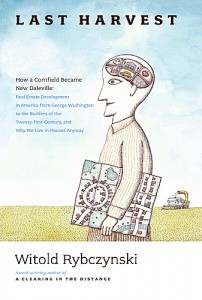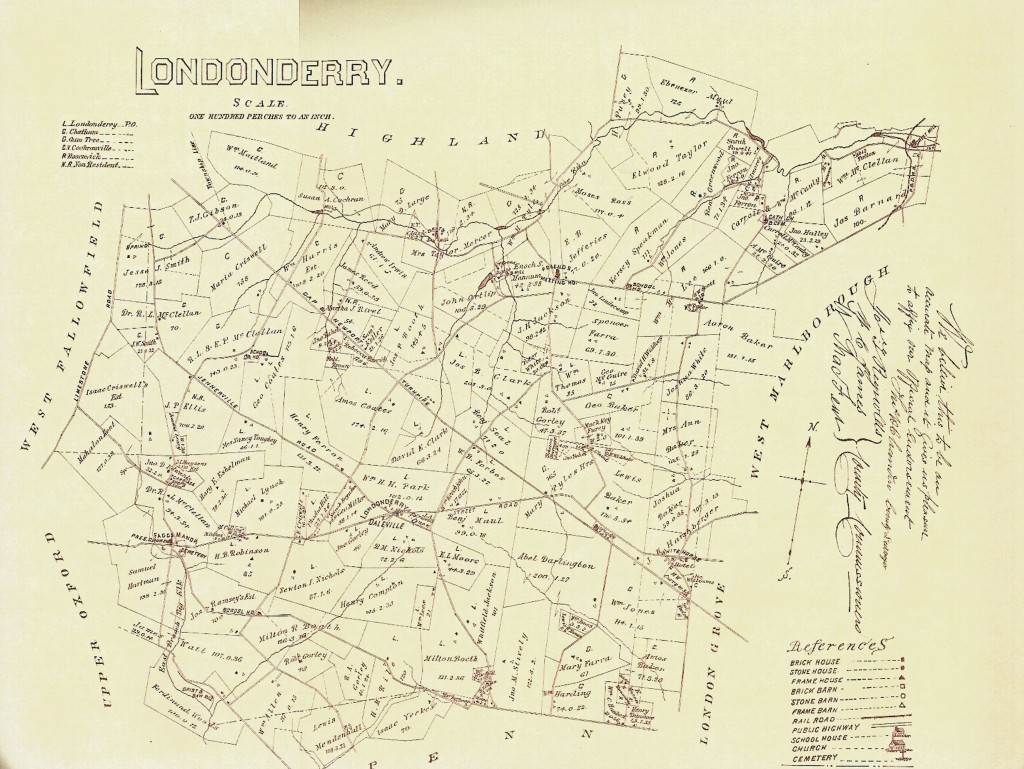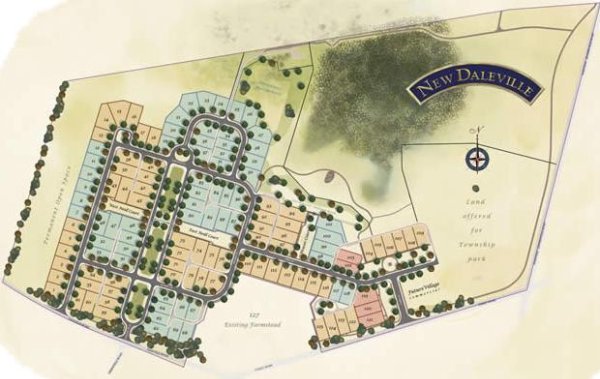To keep up with emerging ideas, highlight especially important works, and provide diverse views on issues in planning and design, I will be highlighting some of my past and current readings over the next year.
To begin, I’d like to feature a pair of books from one of the best authors in architecture and urban studies: Witold Rybczynski. Two of his books contrast the extremes of development: Last Harvest (2007) and City Life (1995). (For now, I will forgo his wonderful biography of Frederick Law Olmsted, A Clearing in the Distance, and his latest, Makeshift Metropolis.)
The subtitle of Last Harvest is a summary of its theme: “How a Cornfield Became New Daleville: Real Estate Development in America from George Washington to the Builders of the Twenty-first Century, and Why We Live in Houses Anyway”. It covers a lot of ground in 300 pages, but, it’s a fast, pleasant, informative read. My only real gripe is the lack of illustrations and maps.
The narrative of Last Harvest is not linear – it weaves history into a story about the development of New Daleville in Londonderry Township in Chester County, PA. While focusing on creating a “new urbanist” suburb from a cornfield and the various decisions and perspectives of the developer, the municipal representative, citizens, and designers, Rybczynski provides an overview of several precedents and important general factors of such development. These include a brief history of:
- Seaside;
- Unwin’s seminal work, Town Planning in Practice;
- Zoning history;
- Real estate transactions by the first settlers;
- Kentlands (here in Montgomery County);
- Sprawl and suburbanization, which Rybczynski describes under the heading of “scatteration”;
- Housing patterns and typologies; and
- Consumer preferences and lifestyles.
The bulk of the book, believe it or not, focuses on the minutiae of the meetings, proposals, redesigns, meetings, pricing and marketing concerns, compromises, and more meetings required to obtain the support and, ultimately, the approvals to create New Daleville. It’s a fascinating – really, I promise – description that will sound familiar to those who are active in zoning and planning discussions in Montgomery County, but it provides a view into many aspects of the process that aren’t typically seen. This is an important contribution to the understanding of the whole picture of land development, zoning decisions, and planning that should allow us all to come to the table with a wider perspective.
New Daleville was ultimately built out by Ryan Homes with homes ranging from the low to high $200,000s. Alas, if you really like this style of home (and lifestyle), it is sold out – models such as the Savoy, the Melville, and the Austin (most named after authors … not sure where the Savoy came from) apparently lived up to the developer’s description, “Reminiscent of old-time neighborhoods, this lovely neo-traditional community has a central boulevard lined with picket fences leading you into tree-lined streets and alley ways. The lush landscape is laced with bench-lined paths and winding walkways to pocket parks and recreation areas where neighbors and friends can gather and have fun.” Of course, there is not a store or office within walking distance….
A complete contrast to this history is provided in City Life. Here, Rybczynski sets out to analyze why our cities developed into the form(s) they did. Specifically, why aren’t our cities like European cities?
More, next post.


